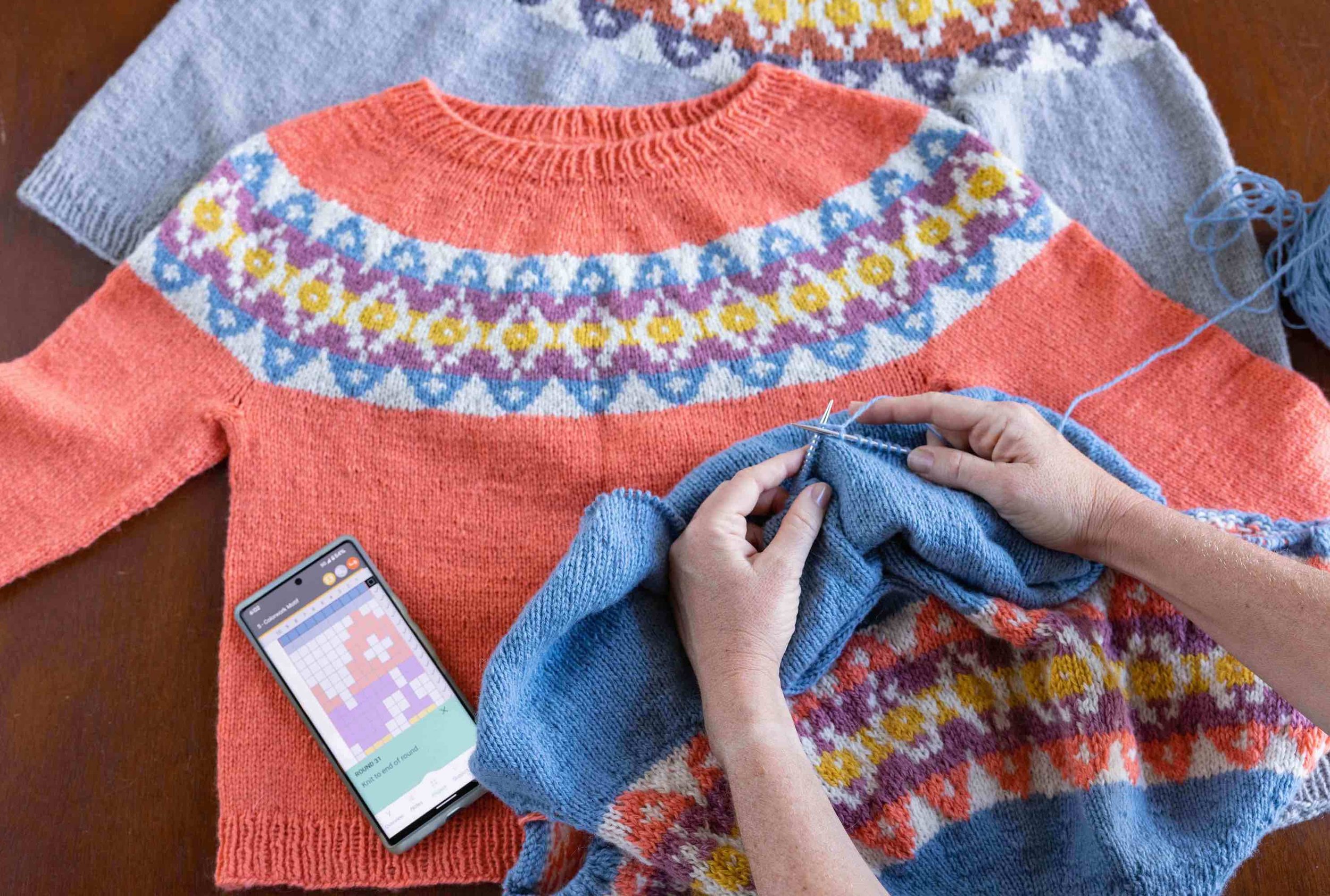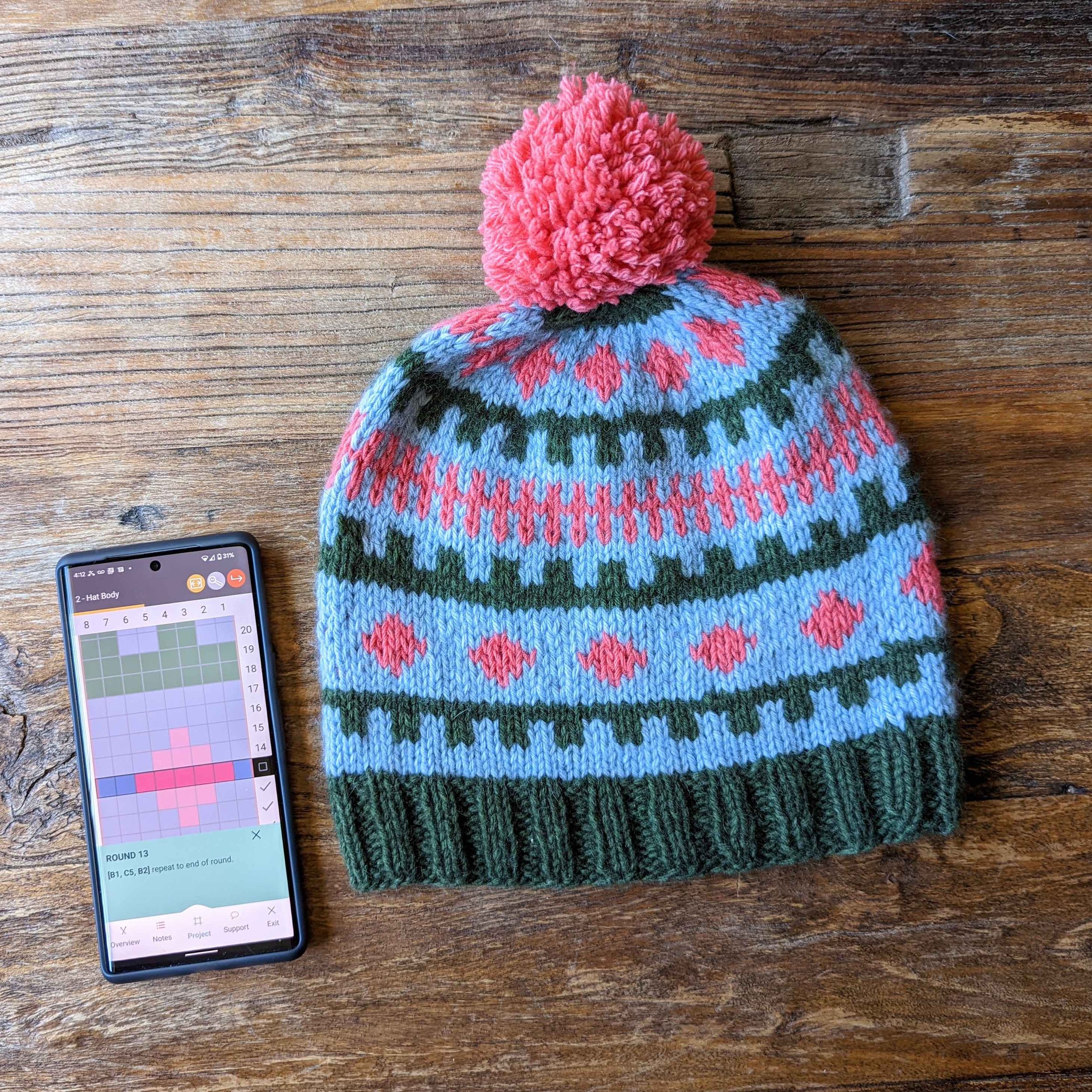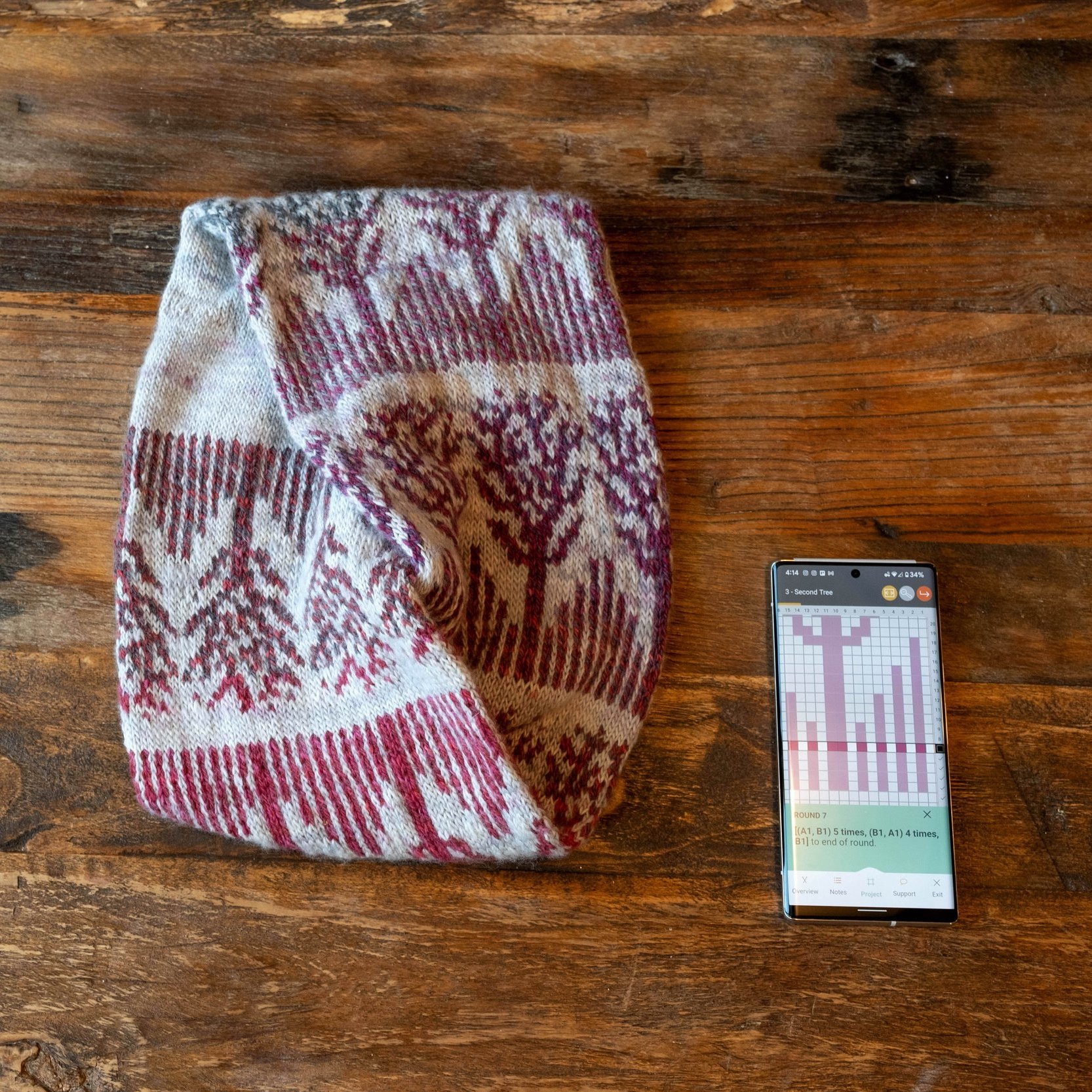Stranded Colorwork for Everyone
If there’s one thing we love, it’s improving our skills. Sometimes when we’re learning something new, we get so fixated on the finished object that it’s easy to forget that practice is an important part of the process. When we sat down for our first piano lessons, Chopin didn’t flow effortlessly from our fingertips. It took diligent practice over many years.
We think stranded colorwork is like this, too. When you start out, it won’t be perfect. There will be mistakes and tension problems, and that’s ok. Think of your colorwork as a journal that will document your growth. When you’re finished, you’ll look back to where you started and be impressed with what you’ve learned.
Colorwork Methods
There are lots of different techniques and methodologies for colorwork. Some people prefer to knit with one hand, releasing each strand of yarn when it’s unused and picking up the other. Some people prefer tensioning two yarns on one hand, either with the positions of their fingers or using equipment made for this.
We typically teach 2-handed knitting. For anyone who’s never knit with their opposite hand, it feels awkward and clunky at first. It’s like learning to knit all over again. But with a little practice, you’ll be flying along with two colors.
Right handed knitters
Right handed knitters will typically carry the background color in their right hand and the motif color (or the color that should be dominant and “pop”) in their left hand. This positioning keeps the motif color in a lower position when looking at the back of the work. The lower position means that the stitches are typically a little bigger, and the bigger stitch means it’s more dominant on the fabric.
Left handed knitters (mirror knitters)
Left handed mirror knitters will typically carry the background color in their left hand and the motif color (or the color that should be dominant and “pop”) in their right hand. This positioning keeps the motif color in a lower position when looking at the back of the work. The lower position means that the stitches are typically a little bigger, and the bigger stitch means it’s more dominant on the fabric.
Locking Floats and Improving Tension
We've heard from a lot of new colorwork knitters that they're intimidated by stranded knitting - they worry that it won't be perfect. We'd like to give you all a little gift right now and say "It won't be perfect, yay!" If you're new to colorwork, recognize that you're learning a new skill and it will improve a LOT with practice. Think about your project as the **first** colorwork project you'll make - it's a journal that will document your growth!
Everyone knits differently. Many knitters knit tighter when stranding and so often, patterns suggest going up a needle size. Some knitters, though, kit more loosely with colorwork. The goal is to have floats that lie flat without being taut when the stitches are well stretched out across the needle. Here are some tips you can try to improve your colorwork:
As you're knitting, spread the stitches out to keep the floats from being too tight. You can also adjust the tension of the carried yarn, if necessary.
Occasionally stretch the knitted fabric along the diagonals to even out stitch sizes.
Keep the working yarns in the correct positions, and arrange the yarn balls to match so that each yarn ball is next to the hand that’s carrying it.
You can try turning the work inside out so the floats are facing you. This can help you see your tension issues and adjust as needed.
If a stitch is pulled too tight and appears too small on the right side, you can fix it at the end by making a duplicate stitch over top in the correct color.
And don't forget that blocking forgives a multitude of sins. :) If you're worried about your tension, try steam blocking or wet blocking before you're finished to see how your work will look.
This video shows how to lock both the motif and background float for right and left handed knitters.
Considerations
We think of all these things as suggestions, and you’ll rarely hear us use the word “always.” That’s because everyone is different, and everyone achieves different tension with different techniques. Experiment and try out a lot of different techniques and methods, and see what works for you.
Put it into Practice
Here are a few of our favorite colorwork patterns currently available in Knitrino. Knitrino works on iOS and Android devices, so to see a pattern, click the image from your phone. 📱





